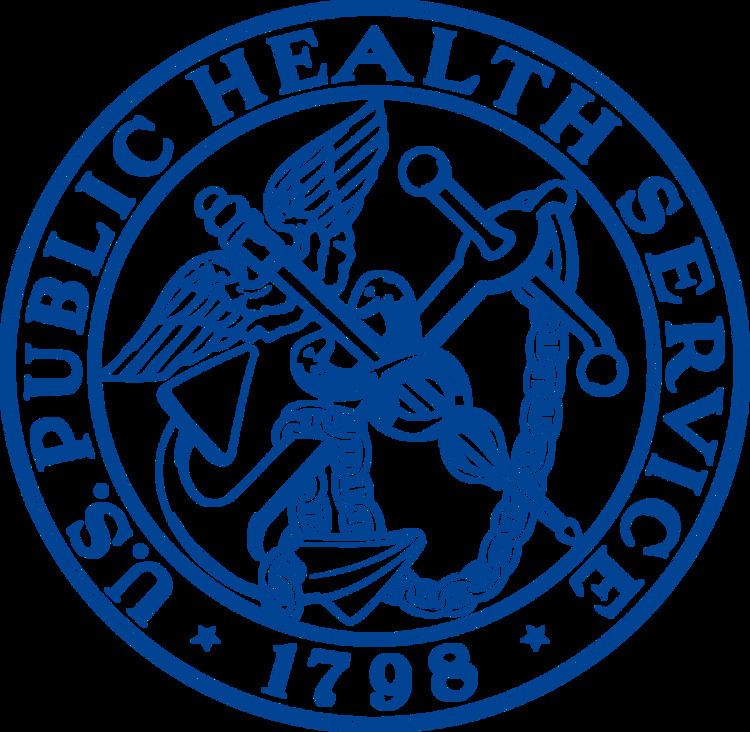Term length 4 years | Formation March 29, 1871 | |
 | ||
Reports to United States Assistant Secretary for Health Seat Hubert H. Humphrey Building, United States Department of Health and Human Services (HHS), Washington, D.C. First holder John M. Woodworth (as Supervising Surgeon) | ||
The Surgeon General of the United States is the operational head of the U.S. Public Health Service Commissioned Corps (PHSCC) and thus the leading spokesperson on matters of public health in the federal government of the United States. The Surgeon General's office and staff are known as the Office of the Surgeon General (OSG).
Contents
The U.S. Surgeon General is nominated by the President of the United States and confirmed by the Senate. The Surgeon General serves a four-year term of office and, depending on whether or not the current Assistant Secretary for Health is a PHSCC commissioned officer, is either the senior or next most senior uniformed officer of the PHSCC, holding the rank of a vice admiral. The current Surgeon General is Vivek Murthy, who was confirmed on December 15, 2014.
Responsibilities
The Surgeon General reports to the Assistant Secretary for Health (ASH), who may be a four-star admiral in the United States Public Health Service, Commissioned Corps (PHSCC), and who serves as the principal adviser to the Secretary of Health and Human Services on public health and scientific issues. The Surgeon General is the overall head of the Commissioned Corps, a 6,500-member cadre of health professionals who are on call 24 hours a day, and can be dispatched by the Secretary of HHS or the Assistant Secretary for Health in the event of a public health emergency.
The Surgeon General is also the ultimate award authority for several public health awards and decorations, the highest of which that can be directly awarded is the Surgeon General's Medallion (the highest award bestowed by board action is the Public Health Service Distinguished Service Medal). The Surgeon General also has many informal duties, such as educating the American public about health issues and advocating healthy lifestyle choices.
The office also periodically issues health warnings. Perhaps the best known example of this is the Surgeon General's warning label that has been present on all packages of American tobacco cigarettes since 1966. A similar health warning has appeared on alcoholic beverages labels since 1988.
History
In 1798, Congress established the Marine Hospital Fund, a network of hospitals that cared for sick and disabled seamen. The Marine Hospital Fund was reorganized along military lines in 1870 and became the Marine Hospital Service—predecessor to today’s United States Public Health Service. The service became a separate bureau of the Treasury Department with its own staff, administration, headquarters in Washington, D.C, and the position of Supervising Surgeon (later Surgeon General).
After 141 years under the Treasury Department, the Service came under the Federal Security Agency in 1939, then the Department of Health, Education, and Welfare (HEW) in 1953, and finally the United States Department of Health and Human Services (HHS).
Some Surgeons General are notable for being outspoken and/or advocating controversial proposals on how to reform the U.S. health system. The office is not a particularly powerful one, and has little direct statutory impact on policy-making, but Surgeons General are often vocal advocates of precedent-setting, far-sighted, unconventional, or even unpopular health policies.
After the resignation of Dr. Regina Benjamin in July 2013, President Barack Obama nominated Dr. Vivek Murthy, to be the nation's next Surgeon General, but the nomination was not advanced until December 2014 due to a delayed confirmation vote in the Senate because conservative lawmakers and the National Rifle Association objected to his views on firearms.
The U.S. Army, Navy, and Air Force also have officers overseeing medical matters in their respective services who hold the title Surgeon General.
The insignia of the Surgeon General, and the USPHS, use the caduceus as opposed to the Rod of Asclepius.
Service rank
The Surgeon General is a commissioned officer in the U.S. Public Health Service Commissioned Corps, one of the seven uniformed services of the United States, and by law holds the rank of vice admiral. Officers of the Public Health Service Commissioned Corps are classified as non-combatants, but can be subjected to the Uniform Code of Military Justice (UCMJ) and the Geneva Conventions when designated by the Commander-in-Chief as a military force or if they are detailed or assigned to work with the armed forces. Officer members of these services wear uniforms that are similar to those worn by the United States Navy, except that the commissioning devices, buttons, and insignia are unique. Officers in the U.S. Public Health Service wear unique devices that are similar to U.S. Navy, Staff Corps Officers (e.g., Navy Medical Service Corps, Supply Corps, etc.).
The only Surgeon General to actually hold the rank of a four-star admiral was David Satcher (born 1941, served 1998–2002). This was because he served simultaneously in the positions of Surgeon General (three-star) and Assistant Secretary for Health (which is a four-star office). John Maynard Woodworth (1837–1879, served 1871–1879), the first holder of the office as "Supervising Surgeon", is the only Surgeon General to not hold a rank.
